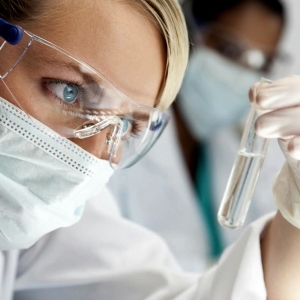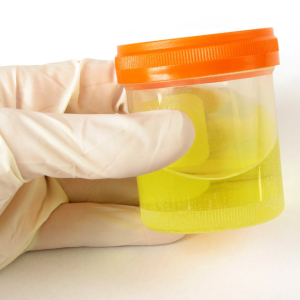General urine analysis is one of the most common methods of laboratory diagnostics in medical practice. Having obtained its results, it is possible to detect the pathology of not only the urinary system, and the whole organism. This analysis boasts the optimal ratio of prices and utility, as well as the speed of its providence.
How to hand over urine for general analysis
First of all, it is necessary to exclude factors that can change the quality or quantitative composition of urine. 1-2 days before the urine passing, you can not drink alcoholic beverages and diuretic drugs. It is necessary to refrain from severe physical labor and food consumption that can cause a change in urine color. Most often, urine color change vegetables. On the day of research should not be menstruation.
Urine is collected in the morning in a large capacity, after the toilet exterior genitals. After that, it must be stolen and pour 50 grams into a special jar. If bacteriological research is planned, the jar must be sterile. Store urine can be 1-2 hours in a cold place. The earlier urine falls into the laboratory, the more accurate the results will be.

Urine Total Analysis Indicators
- The amount of urine (rate is 1-1.5 l or ¾ from the drinking liquid). This parameter does not make sense in the outpatient conditions, since you bring only 50 ml. But in the conditions of the hospital, a quantitative measurement of urine is carried out. The daily volume of urine is often increased in diabetes mellitus, tubulopathy, during the polyuric stage of acute lack of kidney, as well as when receiving diuretic drugs and abundant drinking. The decrease is observed at the initial stages of acute kidney insufficiency, urolithiasis, chronic kidney disease and polycystic disease.
- Urine color (the norm is light yellow). Such a color indicator is due to the presence of pigment - urobilin. There is a pathological or physiological change in staining urine. In the first version, urine is painted after the use of some products or intensive sweating. In pathological cases, urine often has red or brown. This may be due to the fall in the urine of red blood cells during glomerulonephritis, urolithiasis, tumor decay. Water can darken with liver diseases when it cannot withdraw pigments from the body.
- Urine transparency (transparent norm). This parameter depends on the proportion of urine. The more dry residue in it, the more stronger it becomes. Also urine may seem muddy if there is a lot of mucus in it, which happens when cystitis or pyelonephritis. Instead of mucus, pus can be released, which further lowers urine transparency.
- The smell of urine (the norm is not sharp and without third-party odors). Water can smell acetone, which is characteristic of decompensation of diabetes. It can also have the smell of sauerkraut or maple path, which is characteristic of some hereditary diseases. Water can have a sharp smell with increasing its acidity.
- Urine reaction (pH 4.5-6). The acidity of urine is often rising after infectious diseases. It may vary under the influence of water, which in different regions has a different composition of chemical elements. Long decrease or increase in acidity often leads to the formation of stones.
- Specific urine (rate 1010-1025). This indicator depends on the amount of substances dissolved in the urine. Reducing specific gravity occurs in cases where the amount of urine increases. And if the urine is not enough, it becomes more concentrated, which increases its proportion. Such changes can be physiological and pathological.
- Urine protein (standard up to 0.033 g / l). In the norm, the protein molecule is practically not penetrating through the filter of non-nourishes. This can occur when they are inflammation, damage, amyloidosis, multiple myeloma and hereditary diseases of the kidneys.
- Glucose urine (no normal). Glucose appears in the urine in diabetes mell, when the level of glucose capillary blood exceeds 10 mmol / l.
- Mochy ketone bodies (Normal). Ketone bodies are detected during diabetes mellitus. At the same time, urine has the smell of acetone.
- Erythrocytes of urine (rate 1-3 in sight). The amount of erythrocytes increases with glomerulonephritis, acute kidney damage, urolithiasis.
- Urine leukocytes (norm 3-5 in sight). The number of leukocytes increases with inflammatory diseases of the urinary system: glomerulonephritis, pyelonephritis, cystitis, urethritis.
- Epithelium urine (rate up to 10 in sight). The indicator increases with inflammatory processes and urolithiasis.
- Urine cylinders (Normal). The increase in the level of cylinders indicates the accumulation of various cells or substances in the tube of nephron.
- Salts of urine (no normal). The indicator increases with urolithiasis and various tubulopathy.
- Bacteria, mushrooms, parasites and mucus (Normal). The presence of these elements requires determining the causative agent and conducting sighting therapy.

In some cases, the overall analysis of urine may not display the entire picture of the disease. In such options, other laboratory methods of urine research are used: in Nechiphenko, Zemnitsky and Ambourg.






























